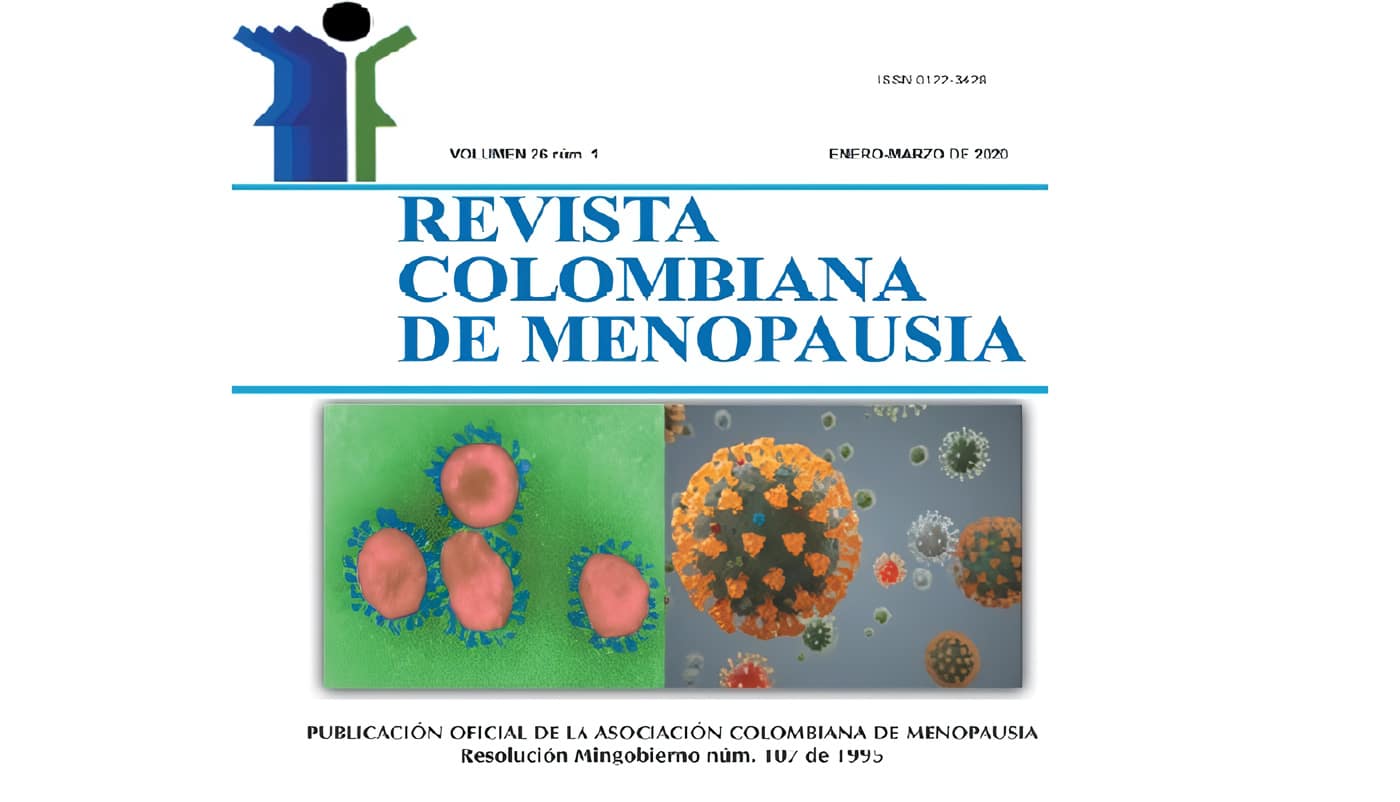Discusión
Al desarrollar las Directrices Europeas sobre Mamas, la ECIBC utilizó un enfoque riguroso para producir recomendaciones sobre detección y diagnóstico de cáncer de mama para mujeres. Las pautas incluyen recomendaciones que abordan el uso de varias pruebas, incluyendo DBT, MRI, ABUS y HHUS, para mujeres que tienen lesiones sospechosas en mamografía o quienes tienen tejido mamario denso.
El uso de algunas pruebas, como DBT, en mujeres con alta densidad mamaria no se aborda en esta sinopsis, pero actualizaciones que incorporan evidencia pertinente emergente y recomendaciones relacionadas están en camino.
Los puntos fuertes de las pautas incluyen su adherencia a los requisitos para un desarrollo confiable4, 6, 98, incluida la exhibición pública y transparente de todas las pruebas, consideraciones y juicios para uso de mujeres, profesionales de la salud, formuladores de políticas e investigadores (https://ecibc.jrc.ec.europa.eu/recommendations).
Anteriormente describimos las limitaciones de nuestras pautas relacionadas con la falta de evidencia de alta certeza para algunas recomendaciones, la ausencia de modelado formal, y conflictos de intereses y problemas de proceso7.
Creemos que estas limitaciones están equilibradas por la transparencia de las recomendaciones que permite el discurso científico y la comparación con otras pautas.
Nuestras recomendaciones clave sobre tamizaje en mujeres menores de 50 años en general están de acuerdo con las pautas del American College of Obstetricians and Gynecologists99, el American College of Physicians100, y la American Cancer Society101, que sugieren una toma de decisiones compartida.
Sin embargo, nuestras recomendaciones son menos fuertes y favorecen intervalos de detección más amplios que el American College of Radiology102 y el National Comprehensive Cancer Network103.
Para los otros grupos de edad, las recomendaciones concuerdan con las de la Organización Mundial de la Salud104 y la U. S. Preventive Services Task Force105 pero no con las de la Canadian Task Force for Preventive Health Care (CTFPHC)106.
El CTFPHC también utilizó enfoque GRADE EtD, lo cual permite una exploración más detallada de las diferencias. La diferencia clave es la recomendación del CTFPHC contra la detección en mujeres hasta los 49 años y después de los 69 años.
Creemos que esto es el resultado de que el CTFPHC atribuye un valor más alto a daños potenciales más preocupaciones sobre el riesgo de sesgo, lo que lleva a una menor certeza de la evidencia, y mayor importancia atribuida a los resultados para los cuales había menos información disponible. Esto a su vez llevó al CTFPHC a asignar en general menor certeza.
El GDG de ECIBC ha analizado cuidadosamente los datos existentes y complementó los ECA cuando estuvieron disponibles con estudios observacionales y no tuvo graves preocupaciones sobre el riesgo de sesgo en los ensayos en general (véanse las explicaciones en el perfil de evidencia en http://bit.ly/ 2qNKE91).
En contraste con el CTFPHC, los ECIBC GDG tampoco tenían preocupaciones sobre la inconsistencia en resultados de la prueba, lo que hace que el GDG tenga más confianza en la recomendación para mujeres de 50 a 69 años.
(Lea También: Aspirina para la Prevención Primaria de la Enfermedad Cardiovascular en Mujeres)
La viabilidad de implementar una recomendación, la aceptabilidad de esa recomendación, los recursos requeridos y los valores asociados a menudo son contextualmente dependientes.
Algunos países han comenzado o tienen la intención de adaptar o adoptar recomendaciones específicas en Europa (Bulgaria, República Checa, Dinamarca, Estonia, Alemania, Italia, Noruega y Eslovaquia) y fuera de Europa (Bahrein, Chile, China y Túnez) usando los marcos EtD y el GRADO-ADOLOPMENT (GRADO EtD, para la adopción de metodología, adaptación y desarrollo de novo de recomendaciones confiables)107.
En resumen, esta sinopsis presenta y resume la justificación de 15 recomendaciones clave de la European Breast Guidelines.
From McMaster University, Hamilton, Ontario, Canada (H.J.S.); European Commission, Joint Research Centre, Ispra, Italy (D.L., E.P., Z.S.); St. Vincent’s University Hospital, Dublin, Ireland (C.Q.); German Cancer Society, Berlin, Germany (M.F.); Iberoamerican Cochrane Center, Barcelona, Spain (P.A.); Azienda Unitá Sanitaria Locale-IRCCS di Reggio Emilia, Reggia Emilia, Italy (P.G.R.); Private Group Practice for Pathology, Lübeck, Germany (A.L.);
Umeå University, Umeå, Sweden (L.N.); Radboud University Medical Centre, Nijmegen, the Netherlands (M.B.); University of Athens Medical School, Athens, Greece (L.I.); Queen Mary University of London, London, United Kingdom (S.W.D.); University of Geneva, Geneva, Switzerland (B.B.); National Screening Service, Dublin, Ireland (P.F.); Cancer Registry of Norway, Oslo, Norway (S.H.); IMIM (Hospital del Mar Medical Research Institute), Barcelona, Spain (X.C.); CPO-Piedmont – AOU Cittá della Salute e della Scienza, Torino, Italy (L.G.); Iberoamerican Cochrane Centre, Barcelona, Spain (C.C.); Langford, North Somerset, United Kingdom (S.W.); Cardiff University, Cardiff, United Kingdom (R.M.); Universitá degli Studi di Milano, Milan, Italy (F.S.); and Radiologie am Theater, Paderborn, Germany (A.G.).
Referencias
-
1. Deandrea S, Molina-Barceló A, Uluturk A, et al. Presence, characteristicsand equity of Access to breast cancer screening programmes in 27 European countries in 2010 and 2014. Results from an international survey. Prev Med. 2016;91:250-63. [PMID: 27527575] doi:10. 1016/j.ypmed.2016.08.021
-
2. Perry N, Broeders M, DeWolf C, et al. European Guidelines for Quality Assurance in Breast Cancer Screening and Diagnosis. 4th ed. Luxembourg: Office for Official Publications of the European Communities; 2006.
-
3. Institute of Medicine. Clinical Practice Guidelines We Can Trust. Washington, DC: National Academies Pr; 2011.
-
4. Oxman AD, Fretheim A, Schünemann HJ; SURE. Improving the use of research evidence in guideline development: introduction. Health Res Policy Syst. 2006;4:12. [PMID: 17116254]
-
5. Qaseem A, Forland F, Macbeth F, et al; Board of Trustees of the Guidelines International Network. Guidelines International Network: toward international standards for clinical practice guidelines. Ann Intern Med. 2012;156:525-31. [PMID: 22473437] doi:10. 7326/0003-4819-156-7-201204030-00009
-
6. Schünemann HJ, Wiercioch W, Etxeandia I, et al. Guidelines 2.0: systematic development of a comprehensive checklist for a successful guideline enterprise. CMAJ. 2014;186:E123-42. [PMID: 24344144] doi:10.1503/cmaj.131237
-
7. Schünemann HJ, Lerda D, Dimitrova N, et al; European Commission Initiative on Breast Cancer Contributor Group. Methods for development of the European Commission Initiative on Breast Cancer guidelines: recommendations in the era of guideline transparency. Ann Intern Med. 2019. [PMID: 31330534] doi:10.7326/M18-3
-
8. Andrews J, Guyatt G, Oxman AD, et al. GRADE guidelines: 14. Going from evidence to recommendations: the significance and presentation of recommendations. J Clin Epidemiol. 2013;66:719-25. [PMID: 2331 2392] doi:10.1016/j.jclinepi.2012.03.013
-
9. Bond M, Pavey T, Welch K, et al. Systematic review of the psychological consequences of false-positive screening mammograms. Health Technol Assess. 2013;17:1-170, v-vi. [PMID: 23540978] doi:10.3310/hta17130
-
10. Brett J, Bankhead C, Henderson B, et al. The psychological impact of mammographic screening. A systematic review. Psychooncology. 2005;14:917-38. [PMID: 15786514]
-
11. Salz T, Richman AR, Brewer NT. Meta-analyses of the effect of false-positive mammograms on generic and specific psychosocial outcomes. Psychooncology. 2010;19:1026-34. [PMID: 20882572] doi:10.1002/pon.1676
-
12. Mathioudakis AG, Salakari M, Pylkkanen L, et al. Systematic review on women’s values and preferences concerning breast cáncer screening and diagnostic services. Psychooncology. 2019;28:939-47. [PMID: 30812068] doi:10.1002/pon.5041
-
13. Miller AB, Baines CJ, To T, et al. Canadian national breast screening study: 1. breast cancer detection and death rates among women aged 40 to 49 years. CMAJ. 1992;147:1459-76. [PMID: 1423087]
-
14. Bjurstam NG, Björneld LM, Duffy SW. Updated results of the gothenburg trial of mammographic screening. Cancer. 2016;122: 1832-5. [PMID: 27061821] doi:10.1002/ cncr.29975
-
15. Moss SM, Wale C, Smith R, et al. Effect of mammographic screening from age 40 years on breast cancer mortality in the UK Age trial at 17 years’ follow-up: a randomised controlled trial. Lancet Oncol. 2015;16:1123-32. [PMID: 26206144] doi:10.1016/S1470- 2045(15)00128-X
-
16. Nyström L, Andersson I, Bjurstam N, et al. Long-term effects of mammography screening: updated overview of the Swedish randomised trials. Lancet. 2002;359:909-19. [PMID: 11918907]
-
17. Shapiro S. Periodic screening for breast cancer: the HIP randomized controlled trial. Health insurance plan. J Natl Cancer Inst Monogr. 1997:27-30. [PMID: 9709271]
-
18. Tabar L, Duffy SW, Yen MF, et al. All-cause mortality among breast cancer patients in a screening trial: support for breast cáncer mortality as an end point. J Med Screen. 2002;9:159-62. [PMID:12518005]
-
19. Habbema JD, van Oortmarssen GJ, van Putten DJ, et al. Agespecific reduction in breast cancer mortality by screening: an analysis of the results of the Health Insurance Plan of Greater New York study.
-
20 . Hofvind S, Ponti A, Patnick J, et al; EUNICE Project and Euroscreen Working Groups. False-positive results in mammographic screening for breast cancer in Europe: a literature review and survey of service screening programmes. J Med Screen. 2012;19 Suppl 1:57-66. [PMID: 22972811]
-
21. Bjurstam N, Björneld L, Warwick J, et al. The Gothenburg breast screening trial. Cancer. 2003;97:2387-96. [PMID: 12733136]
-
22. Tabar L, Fagerberg G, Chen HH, et al. Efficacy of breast cáncer screening by age. New results from the Swedish Two-County Trial. Cancer. 1995;75:2507-17. [PMID: 7736395]
-
23. Chu KC, Smart CR, Tarone RE. Analysis of breast cancer mortality and stage distribution by age for the Health Insurance Plan clinical trial. J Natl Cancer Inst. 1988;80:1125-32. [PMID: 3411625]
-
24. Miller AB, To T, Baines CJ, et al. The Canadian National Breast Screening Study-1: breast cancer mortality after 11 to 16 years of followup. A randomized screening trial of mammography in women age 40 to 49 years. Ann Intern Med. 2002;137:305-12. [PMID: 12204013]
-
25. Moss S, Waller M, Anderson TJ, et al; Trial Management Group. Randomised controlled trial of mammographic screening in women from age 40: predicted mortality based on surrogate outcome measures. Br J Cancer. 2005;92:955-60. [PMID: 15726103]
-
26. Nyström L, Andersson I, Bjurstam N, et al. Long-term effects of mammography screening: updated overview of the Swedish randomised trials. Lancet. 2002;359:909-19. [PMID: 11918907]
-
27. Miller AB. The costs and benefits of breast cancer screening. Am J Prev Med. 1993 May- Jun;9:175-80. [PMID: 8347369]
-
28. Andersson I, Aspegren K, Janzon L, et al. Mammographic screening and mortality from breast cancer: the Malmö mammographic screening trial. BMJ. 1988;297:943-8. [PMID: 3142562]
-
29. Tabar L, Chen HH, Duffy SW, et al. Primary and adjuvant therapy, prognostic factors and survival in 1053 breast cancers diagnosed in a trial of mammography screening. Jpn J Clin Oncol. 1999;29:608-16. [PMID: 10721943]
-
30. Frisell J. Mammographic screening for breast cancer [thesis]. Stockholm: Stockholm University; 1989. 31. Miller AB, To T, Baines CJ, et al. The Canadian National Breast Screening Study-1: breast cancer mortality after 11 to 16 years of followup. A randomized screening trial of mammography in women age 40 to 49 years. Ann Intern Med. 2002;137:305-12. [PMID: 12204013]
-
31. Hellquist BN, Duffy SW, Abdsaleh S, et al. Effectiveness of population-based service screening with mammography for women ages 40 to 49 years: evaluation of the Swedish Mammography Screening in Young Women (SCRY) cohort. Cancer. 2011;117:714-22. [PMID: 20882563] doi:10.1002/cncr.25650
-
32. Sankatsing VD, Heijnsdijk EA, van Luijt PA, et al. Cost effectiveness of digital mammography screening before the age of 50 in the Netherlands. Int J Cancer. 2015;137:1990-9. [PMID:25895135] doi:10.1002/ijc.29572
-
33. Madan J, Rawdin A, Stevenson M, et al. A rapid-response economic evaluation of the UK NHS Cancer Reform Strategy breast cáncer screening program extension via a plausible bounds approach. Value Health. 2010 Mar-Apr;13:215-21. [PMID: 19878494] doi: 10.1111/j.1524-4733.2009.00667.x
-
34. Miller AB, Baines CJ, To T, et al. Canadian national breast screening study: 2. breast cancer detection and death rates among women aged 50 to 59 years. CMAJ. 1992;147:1477-88. [PMID: 1423088]
-
35. Bjurstam N, Björneld L, Warwick J, et al. The Gothenburg breast screening trial. Cancer. 2003;97:2387-96. [PMID: 12733136]
-
36. Tabar L, Fagerberg G, Chen HH, et al. Efficacy of breast cáncer screening by age. New results from the Swedish Two-County Trial. Cancer. 1995;75:2507-17. [PMID: 7736395]
-
37. Miller AB, To T, Baines CJ, et al. Canadian National Breast Screening Study-2: 13-year results of a randomized trial in women aged 50-59 years. J Natl Cancer Inst. 2000;92:1490- 9. [PMID: 10995804]
-
38. Zackrisson S, Andersson I, Janzon L, et al. Rate of over-diagnosis of breast cancer 15 years after end of Malmö mammographic screening trial: follow-up study. BMJ. 2006;332:689-92. [PMID: 16517548]
-
39. Pharoah PD, Sewell B, Fitzsimmons D, et al. Cost effectiveness of the NHS breast screening programme: life table model. BMJ. 2013; 346:f2618. [PMID: 23661112] doi:10.1136/ bmj.f2618
-
40. Carles M, Vilaprinyo E, Cots F, et al. Costeffectiveness of early detection of breast cancer in Catalonia (Spain). BMC Cancer. 2011;11: 192. [PMID: 21605383] doi:10.1186/1471- 2407-11-192
-
41. Rojnik K, Naversnik K, Mateovic-Rojnik T, et al. Probabilistic cost-effectiveness modeling of different breast cancer screening policies in Slovenia. Value Health. 2008 Mar-Apr;11:139- 48. [PMID: 18380626] doi:10.1111/j.1524- 4733.2007.00223.x
-
42. Breast Screening Frequency Trial Group. The frequency of breast cancer screening: results from the UKCCCR randomised trial. United Kingdom co-ordinating committee on cancer research. Eur J Cancer. 2002;38:1458-64. [PMID: 12110490]
-
43. O’Meara ES, Zhu W, Hubbard RA, et al. Mammographic screening interval in relation to tumor characteristics and false-positive risk by race/ethnicity and age. Cancer. 2013;119: 3959-67. [PMID: 24037812] doi:10.1002/ cncr. 28310
-
44. Vilaprinyo E, Forné C, Carles M, et al; Interval Cancer (INCA) Study Group. Cost-effectiveness and harm-benefit analyses of riskbased screening strategies for breast cancer. PLoS One. 2014;9:e86858. [PMID: 24498285] doi:10.1371/journal.pone.0086858
-
45. Yaffe MJ, Mittmann N, Lee P, et al. Clinical outcomes of modelling mammography screening strategies. Health Rep. 2015;26:9- 15. [PMID: 26676234]
-
46. Kerlikowske K, Zhu W, Hubbard RA, et al; Breast Cancer Surveillance Consortium. Outcomes of screening mammography by frequency, breast density, and postmenopausal hormone therapy. JAMA Intern Med. 2013;173:807-16. [PMID: 23552817] doi: 10.1001/jamainternmed.2013.307
-
47. Miller AB, Wall C, Baines CJ, et al. Twenty five year follow-up for breast cancer incidence and mortality of the Canadian National Breast Screening Study: randomised screening trial. BMJ. 2014;348:g366. [PMID: 24519768] doi:10.1136/bmj.g366
-
48. Tabár L, Vitak B, Chen HH, et al. The Swedish Two-County Trial twenty years later. Updated mortality results and new insights from longterm follow-up. Radiol Clin North Am. 2000;38:625-51. [PMID: 10943268]
-
49. Mandelblatt JS, Stout NK, Schechter CB, et al. Collaborative modeling of the benefits and harms associated with different U.S. breast cancer screening strategies. Ann Intern Med. 2016;164:215-25. [PMID: 26756606] doi:10. 7326/M15-1536
-
50. Miglioretti DL, Lange J, van den Broek JJ, et al. Radiation induced breast cancer incidence and mortality from digital mammography screening: a modeling study. Ann Intern Med. 2016;164:205-14. [PMID: 26756460] doi:10. 7326/M15-1241
-
51. Miglioretti DL, Zhu W, Kerlikowske K, et al; Breast Cancer Surveillance Consortium. Breast tumor prognostic characteristics and biennial vs annual mammography, age, and menopausal status. JAMA Oncol. 2015;1:1069-77. [PMID: 26501844] doi:10.1001/jamaoncol. 2015.3084
-
52. Braithwaite D, Zhu W, Hubbard RA, et al; Breast Cancer Surveillance Consortium. Screening outcomes in older US women undergoing multiple mammograms in community practice: does interval, age, or comorbidity score affect tumor characteristics or false positive rates? J Natl Cancer Inst. 2013;105:334-41. [PMID: 23385442] doi:10. 1093/jnci/djs645
-
53. Hunt KA, Rosen EL, Sickles EA. Outcome analysis for women undergoing annual versus biennial screening mammography: a review of 24,211 examinations. AJR Am J Roentgenol. 1999;173:285-9. [PMID: 10430120]
-
54. Dittus K, Geller B, Weaver DL, et al; Breast Cancer Surveillance Consortium. Impact of mammography screening interval on breast cancer diagnosis by menopausal status and BMI. J Gen Intern Med. 2013;28:1454-62. [PMID: 23760741] doi:10.1007/s11606-013- 2507-0
-
55. Romero Martín S, Raya Povedano JL, Cara García M, et al. Prospective study aiming to compare 2D mammography and tomosynthesis + synthesized mammography in terms of cancer detection and recall. From double reading of 2D mammography to single reading of tomosynthesis. Eur Radiol. 2018;28:2484- 91. [PMID: 29294150] doi:10.1007/s00330- 017-5219-8
-
56. Skaane P, Bandos AI, Gullien R, et al. Comparison of digital mammography alone and digital mammography plus tomosynthesis in a population-based screening program. Radiology. 2013;267:47-56. [PMID: 23297 332] doi:10.1148/radiol.12121373
-
57. Bernardi D, Macaskill P, Pellegrini M, et al. Breast cancer screening with tomosynthesis (3D mammography) with acquired or synthetic 2D mammography compared with 2D mammography alone (STORM-2): a population-based prospective study. Lancet Oncol. 2016;17:1105- 13. [PMID: 27345635] doi:10.1016/S1470- 2045(16)30101-2
-
58. Ciatto S, Houssami N, Bernardi D, et al. Integration of 3D digital mammography with tomosynthesis for population breast-cancer screening (STORM): a prospective comparison study. Lancet Oncol. 2013;14:583-9. [PMID: 23623721] doi:10.1016/S1470-2045(13) 70134-7
-
59. Wallis MG, Moa E, Zanca F, et al. Two-view and single-view tomosynthesis versus fullfield digital mammography: high-resolution X-ray imaging observer study. Radiology. 2012;262:788-96. [PMID: 22274840] doi:10. 1148/radiol.11103514
-
60. Paulis LE, Lobbes MB, Lalji UC, et al. Radiation exposure of digital breast tomosynthesis using an antiscatter grid compared with full-field digital mammography. Invest Radiol. 2015;50:679-85. [PMID: 26011823] doi:10.1097/RLI.0000000 000000168
-
61. Hofvind S, Hovda T, Holen ÅS, et al. Digital breast tomosynthesis and synthetic 2D mammography versus digital mammography: evaluation in a population-based screening program. Radiology. 2018;287:787-94. [PMID: 29494322] doi:10.1148/radiol. 2018171361
-
62. Zackrisson S, Lång K, Rosso A, et al. Oneview breast tomosynthesis versus two-view mammography in the Malmö Breast Tomosynthesis Screening Trial (MBTST): a prospective, population-based, diagnostic accuracy study. Lancet Oncol. 2018;19:1493- 1503. [PMID: 30322817] doi:10.1016/S1470- 2045(18)30521-7
-
63. Bahl M, Gaffney S, McCarthy AM, et al. Breast cancer characteristics associated with 2D digital mammography versus digital breast tomosynthesis for screening-detected and interval cancers. Radiology. 2018;287:49-57. [PMID: 29272213] doi:10.1148/radiol.2017 171148
-
64. Pattacini P, Nitrosi A, Giorgi Rossi P, et al; RETomo Working Group. Digital mammography versus digital mammography plus tomosynthesis for breast cancer screening: the Reggio Emilia tomosynthesis randomized trial. Radiology. 2018;288:375-85. [PMID: 2986 9961] doi:10.1148/radiol.2018172119
-
65. Skaane P, Bandos AI, Eben EB, et al. Twoview digital breast tomosynthesis screening with synthetically reconstructed projection images: comparison with digital breast tomosynthesis with full-field digital mammographic images. Radiology. 2014;271:655-63. [PMID: 24484063] doi:10.1148/radiol. 13131391
-
66. Skaane P, Bandos AI, Gullien R, et al. Prospective trial comparing full-field digital mammography (FFDM) versus combined FFDM and tomosynthesis in a populationbased screening programme using independent double reading with arbitration. Eur Radiol. 2013;23:2061-71. [PMID: 23553585] doi:10. 1007/s00330-013-2820-3
-
67. Lång K, Andersson I, Rosso A, et al. Performance of one-view breast tomosynthesis as a stand-alone breast cancer screening modality: results from the Malmö Breast Tomosynthesis Screening Trial, a population-based study. Eur Radiol. 2016;26:184-90. [PMID:259 29946] doi:10.1007/s00330-015-3803-3
-
68. Lång K, Nergården M, Andersson I, et al. False positives in breast cancer screening with one-view breast tomosynthesis: An analysis of findings leading to recall, work-up and biopsy rates in the Malmö Breast Tomosynthesis Screening Trial. Eur Radiol. 2016;26:3899- 907. [PMID: 26943342]
-
69. Houssami N, Macaskill P, Bernardi D, et al. Breast screening using 2D-mammography or integrating digital breast tomosynthesis (3Dmammography) for single-reading or doublereading— evidence to guide future screening strategies. Eur J Cancer. 2014;50:1799-807. [PMID: 24746887] doi:10.1016/j.ejca.2014. 03.017
-
70. Houssami N, Bernardi D, Caumo F, et al. Interval breast cancers in the ‘screening with tomosynthesis or standard mammography’ (STORM) population-based trial. Breast. 2018;38:150-153. [PMID: 29328943] doi:10. 1016/j.breast.2018.01.002
-
71. Skaane P, Sebuødegård S, Bandos AI, et al. Performance of breast cancer screening using digital breast tomosynthesis: results from the prospective population-based Oslo Tomosynthesis Screening Trial. Breast Cancer Res Treat. 2018;169:489-96. [PMID: 29429017] doi:10. 1007/s10549-018-4705-2
-
72. Gilbert FJ, Tucker L, Gillan MG, et al. Accuracy of digital breast tomosynthesis for depicting breast cancer subgroups in a UK retrospective reading study (TOMMY trial). Radiology. 2015;277:697-706. [PMID: 26176654] doi:10.1148/radiol.2015142566
-
73. Bernardi D, Ciatto S, Pellegrini M, et al. Application of breast tomosynthesis in screening: incremental effect on mammography acquisition and reading time. Br J Radiol. 2012;85:e1174-8. [PMID: 23175484] doi:10.1259/bjr/19385909
-
74. Kelly KM, Dean J, Comulada WS, et al. Breast cancer detection using automated whole breast ultrasound and mammography in radiographically dense breasts. Eur Radiol. 2010;20: 734-42. [PMID: 19727744] doi:10.1007/ s00330-009-1588-y
-
75. Brem RF, Tabár L, Duffy SW, et al. Assessing improvement in detection of breast cancer with three-dimensional automated breast US in women with dense breast tissue: the SomoInsight Study. Radiology. 2015;274:663- 73. [PMID: 25329763] doi:10.1148/radiol.14 132832
-
76. Giuliano V, Giuliano C. Improved breast cancer detection in asymptomatic women using 3D-automated breast ultrasound in mammographically dense breasts. Clin Imaging. 2013 May-Jun;37:480-6. [PMID: 23116728] doi:10.1016/j.clinimag.2012. 09.018
-
77. Ohuchi N, Suzuki A, Sobue T, et al; J-START investigator groups. Sensitivity and specificity of mammography and adjunctive ultrasonography to screen for breast cancer in the Japan Strategic Anticancer Randomized Trial (JSTART): a randomised controlled trial. Lancet. 2016;387:341-8. [PMID: 26547101] doi:10. 1016/S0140-6736(15)00774-6
-
78. De Felice C, Savelli S, Angeletti M, et al. Diagnostic utility of combined ultrasonography and mammography in the evaluation of women with mammographically dense breasts. J Ultrasound. 2007;10:143-51. [PMID: 23396266] doi:10.1016/j.jus.2007.05.001
-
79. Kolb TM, Lichy J, Newhouse JH. Comparison of the performance of screening mammography, physical examination, and breast US and evaluation of factors that influence them: an analysis of 27,825 patient evaluations. Radiology. 2002;225:165-75. [PMID: 12355001]
-
80. Korpraphong P, Limsuwarn P, Tangcharoensathien W, et al. Improving breast cancer detection using ultrasonography in asymptomatic women with non-fatty breast density. Acta Radiol. 2014;55:903-8. [PMID: 24103 915] doi:10.1177/0284185113507711
-
81. Venturini E, Losio C, Panizza P, et al. Tailored breast cáncer screening program with microdose mammography, US, and MR Imaging: short-term results of a pilot study in 40-49-year-old women. Radiology. 2013;268: 347-55. [PMID: 23579052] doi:10.1148/ radiol.13122278
-
82. Corsetti V, Ferrari A, Ghirardi M, et al. Role of ultrasonography in detecting mammographically occult breast carcinoma in women with dense breasts. Radiol Med. 2006;111:440- 8. [PMID: 16683089
-
83. Sprague BL, Stout NK, Schechter C, et al. Benefits, harms, and cost-effectiveness of supplemental ultrasonography screening for women with dense breasts. Ann Intern Med. 2015;162:157-66. [PMID: 25486550] doi:10. 7326/M14-0692
-
84. Berg WA, Zhang Z, Lehrer D, et al; ACRIN 6666 Investigators. Detection of breast cancer with addition of annual screening ultrasound or a single screening MRI to mammography in women with elevated breast cancer risk. JAMA. 2012;307:1394-404. [PMID: 22474 203] doi:10.1001/jama.2012.388
-
85. Kuhl CK, Schrading S, Strobel K, et al. Abbreviated breast magnetic resonance imaging (MRI): first postcontrast subtracted images and maximum-intensity projection-a novel approach to breast cáncer screening with MRI. J Clin Oncol. 2014;32:2304-10. [PMID: 24958821] doi:10.1200/JCO.2013. 52.5386
-
86. Kuhl CK, Strobel K, Bieling H, et al. Supplemental breast MR imaging screening of women with average risk of breast cancer. Radiology. 2017;283:361-370. [PMID: 28221097] doi:10.1148/radiol.2016161444
-
87. Kriege M, Brekelmans CT, Boetes C, et al; Magnetic Resonance Imaging Screening Study Group. Efficacy of MRI and mammography for breast-cancer screening in women with a familial or genetic predisposition. N Engl J Med. 2004;351:427-37. [PMID: 15282350]
-
88. Chen SQ, Huang M, Shen YY, et al. Application of abbreviated protocol of magnetic resonance imaging for breast cancer screening in dense breast tissue. Acad Radiol. 2017;24:316-20. [PMID: 27916594] doi:10.1016/j.acra.2016. 10.003
-
89. Whelehan P, Heywang-Köbrunner SH, Vinnicombe SJ, et al. Clinical performance of Siemens digital breast tomosynthesis versus standard supplementary mammography for the assessment of screen-detected soft-tissue abnormalities: a multi-reader study. Clin Radiol. 2017;72:95.e9-95.e15. [PMID: 27737763] doi:10.1016/j.crad.2016.08.011
-
90. Waldherr C, Cerny P, Altermatt HJ, et al. Value of one-view breast tomosynthesis versus two-view mammography in diagnostic workup of women with clinical signs and symptoms and in women recalled from screening. AJR Am J Roentgenol. 2013;200: 226-31. [PMID: 23255766] doi:10.2214/ AJR.11.8202
-
91. Tagliafico A, Astengo D, Cavagnetto F, et al. One-to-one comparison between digital spot compression view and digital breast tomosynthesis. Eur Radiol. 2012;22:539-44. [PMID: 21987214] doi:10.1007/s00330-011- 2305-1
-
92. Poplack SP, Tosteson TD, Kogel CA, et al. Digital breast tomosynthesis: initial experience in 98 women with abnormal digital screening mammography. AJR Am J Roentgenol. 2007;189:616-23. [PMID: 17715109]
-
93. Michell MJ, Iqbal A, Wasan RK, et al. A comparison of the accuracy of film-screen mammography, full-field digital mammography and digital breast tomosynthesis. Clin Radiol. 2012;67:976-81. [PMID: 22625656] doi:10.1016/j.crad.2012.03.009
-
94. Heywang-Köbrunner SH, Hacker A, Jänsch A, et al; German Reader Team. Use of singleview digital breast tomosynthesis (DBT) and ultrasound vs. additional views and ultrasound for the assessment of screen-detected abnormalities: German multi-reader study. Acta Radiol. 2018;59:782-788. [PMID: 28929783] doi:10.1177/0284185117732600
-
95. Heywang-Köbrunner S, Jaensch A, Hacker A, et al. Value of digital breast tomosynthesis versus additional views for the assessment of screen-detected abnormalities – a first analysis. Breast Care (Basel). 2017;12:92-97. [PMID: 28559765] doi:10.1159/000456649
-
96. Brandt KR, Craig DA, Hoskins TL, et al. Can digital breast tomosynthesis replace conventional diagnostic mammography views for screening recalls without calcifications? A comparison study in a simulated clinical setting. AJR Am J Roentgenol. 2013;200:291-8. [PMID: 23345348] doi:10.2214/AJR.12.8881
-
97. Cornford EJ, Turnbull AE, James JJ, et al. Accuracy of GE digital breast tomosynthesis vs supplementary mammographic views for diagnosis of screen-detected soft-tissue breast lesions. Br J Radiol. 2016;89:20150735. [PMID: 26559441] doi:10.1259/bjr.20150735
-
98. Woolf S, Schünemann HJ, Eccles MP, et al. Developing clinical practice guidelines: types of evidence and outcomes; values and economics, synthesis, grading, and presentation and deriving recommendations. Implement Sci. 2012;7:61. [PMID: 22762158] doi:10. 1186/1748-5908-7-61
-
99. Practice bulletin no. 179 summary: breast cancer risk assessment and screening in average- risk women. Obstet Gynecol. 2017;130: 241-3. [PMID: 28644328] doi:10.1097/ AOG.0000000000002151
-
100. Qaseem A, Lin JS, Mustafa RA, et al; Clinical Guidelines Committee of the American College of Physicians. Screening for breast cancer in average-risk women: a guidance statement from the American College of Physicians. Ann Intern Med. 2019;170:547-60. [PMID: 30959525] doi:10.7326/M18-2147
-
101. Oeffinger KC, Fontham ET, Etzioni R, et al; American Cancer Society. Breast cancer screening for women at average risk: 2015 guideline update from the American Cancer Society. JAMA. 2015;314:1599-614. [PMID: 26501536] doi:10.1001/jama.2015.12783
-
102. Mainiero MB, Moy L, Baron P, et al; Expert Panel on Breast Imaging: ACR Appropriateness Criteria® breast cancer screening. J Am Coll Radiol. 2017;14:S383-S390. [PMID: 29101979] doi:10.1016/j.jacr.2017.08.044
-
103. National Comprehensive Cancer Network. NCCN Clinical Practice Guidelines in Oncology: Breast Cancer. Version 2.2018. Accessed at www.nccn.org/professionals/ physician_gls/pdf/breast-screening.pdf on 7 June 2018.
-
104. World Health Organization. WHO Position Paper on Mammography Screening. Accessed at www.who.int/cancer/publications/ mammography_screening/en on 20 June 2018.
-
105. Nelson HD, Fu R, Cantor A, et al. Effectiveness of breast cancer screening: systematic review and meta-analysis to update the 2009 U.S. Preventive Services Task Force recommendation. Ann Intern Med. 2016;164:244-55. [PMID: 26756588] doi:10.7326/M15-0969
-
106. Klarenbach S, Sims-Jones N, Lewin G, et al; Canadian Task Force on Preventive Health Care. Recommendations on screening for breast cancer in women aged 40-74 years who are not at increased risk for breast cancer. CMAJ. 2018;190:E1441-E1451. [PMID: 30530611] doi:10.1503/cmaj.180463
-
107. Schünemann HJ, Wiercioch W, Brozek J, et al. GRADE Evidence to Decision (EtD) frameworks for adoption, adaptation, and de novo development of trustworthy recommendations: GRADEADOLOPMENT. J Clin Epidemiol. 2017;81:101-10. [PMID: 27713 072] doi:10.1016/j.jclinepi.2016.09.009 CLINICALGUIDELINE A Synopsis of the European Breast Guidelines 56.







